Colorful isn’t a brand that I am personally familiar, more so with this iGame Ultra RTX 5070 Ti that I have in my lab. Truth of the matter is, this will be the first card from this brand and like its rivals, it’s more than just a big, boxy, and pretty face.
Specifications
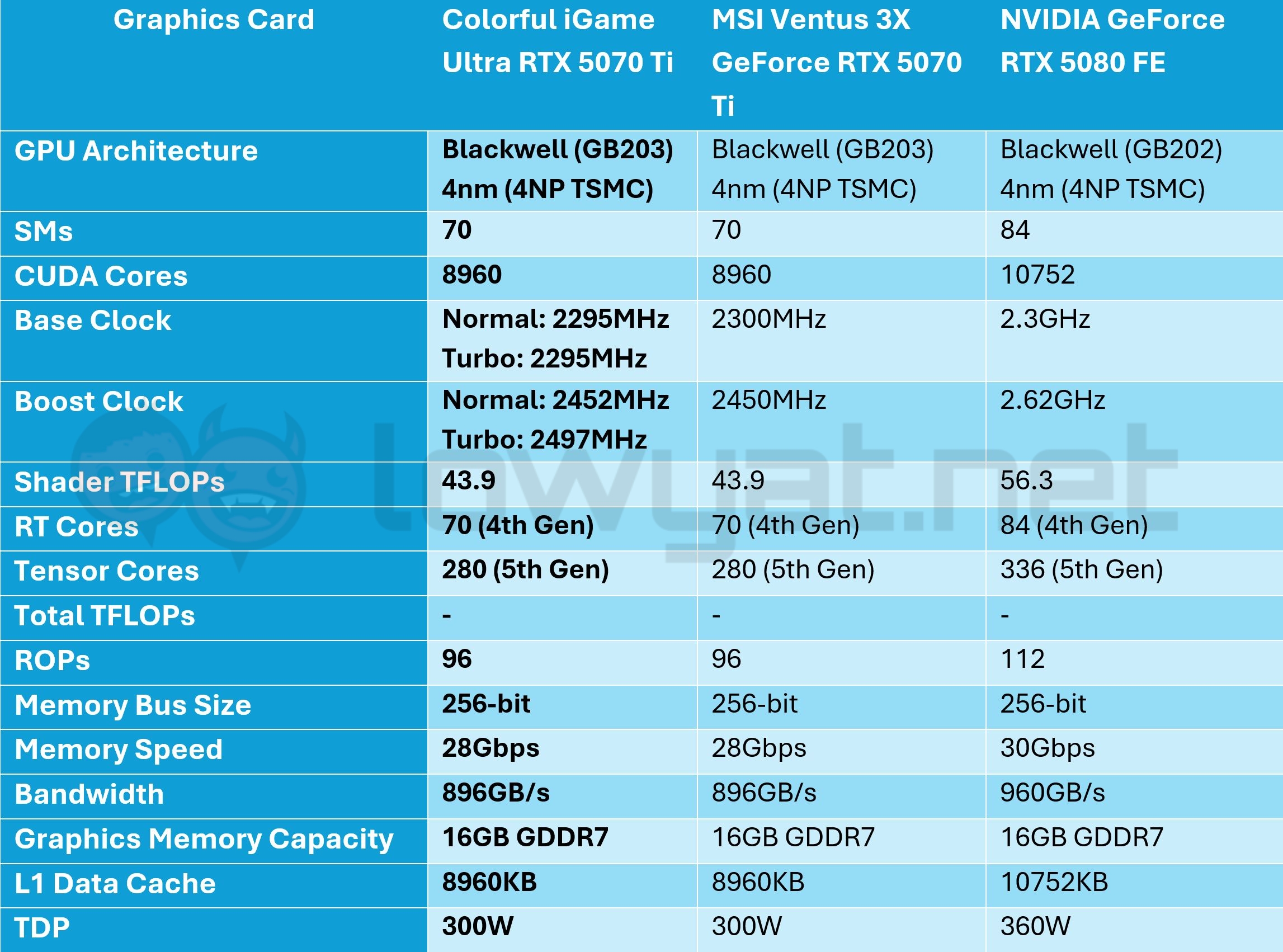
Design
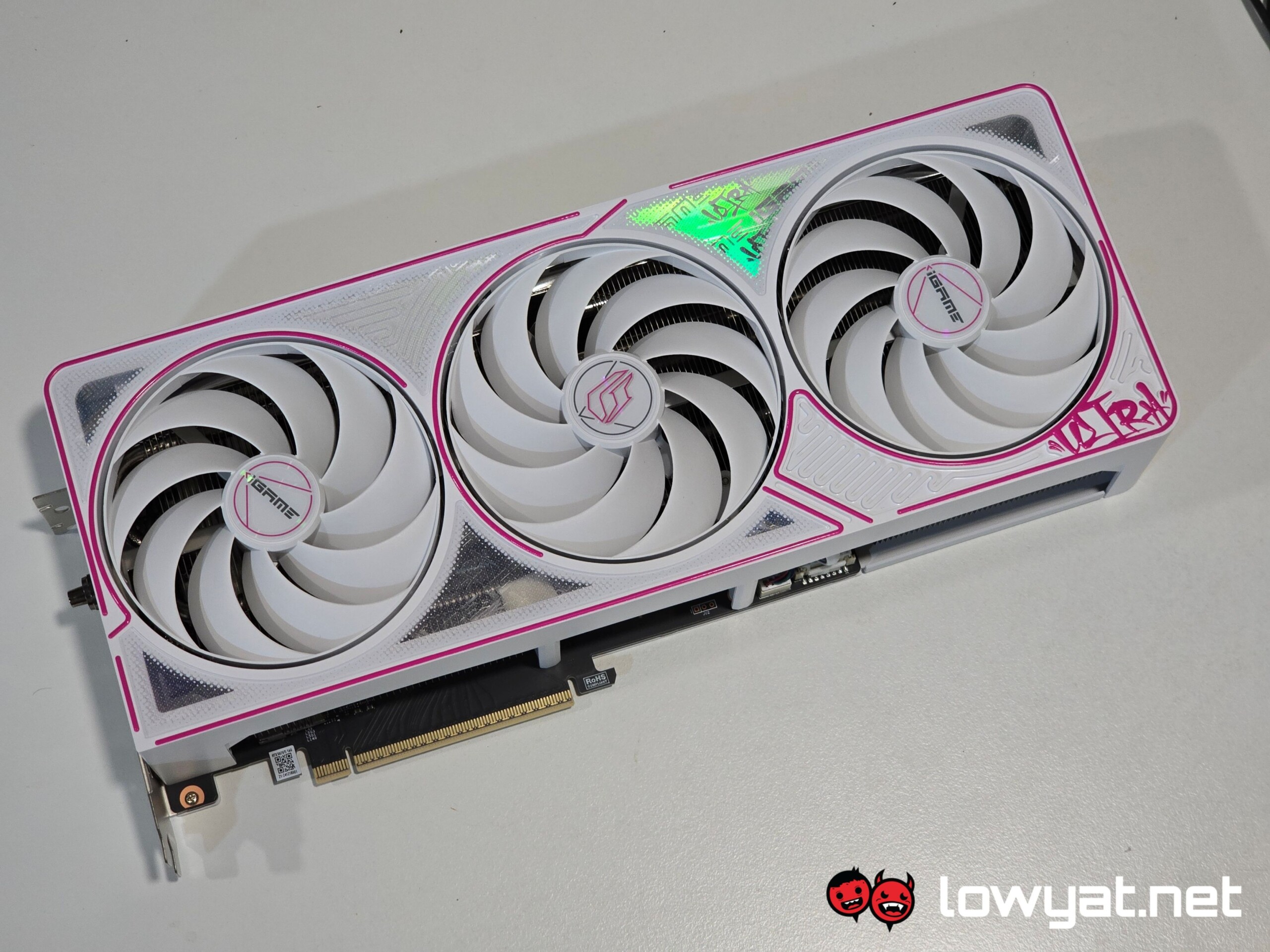

Given that NVIDIA isn’t releasing a Founders Edition for it, I guess it’s only natural that its AIB partner would sandwich the PCB and its GPU with huge chunks of metal and then wrap it up tightly in a uniformly designed cooler shroud. Compared to the MSI Ventus 3X that I reviewed earlier, this iGame Ultra RTX 5070 Ti looks and feels gargantuan, and almost on par in size with Gigabyte’s Aero or ASUS ROG Strix SKUs.
To that end, the iGame Ultra RTX 5070 Ti is cooled via a triple-fan configuration, plus a backplate with the GPU location cut out. Aesthetically, Colorful is clearly going for a more urban and modern with the graffiti-themed stylings that pepper the shroud. Also like all modern GPUs today, you do get RGB built into the spine and yes, it is on the unicorn vomit spectrum.
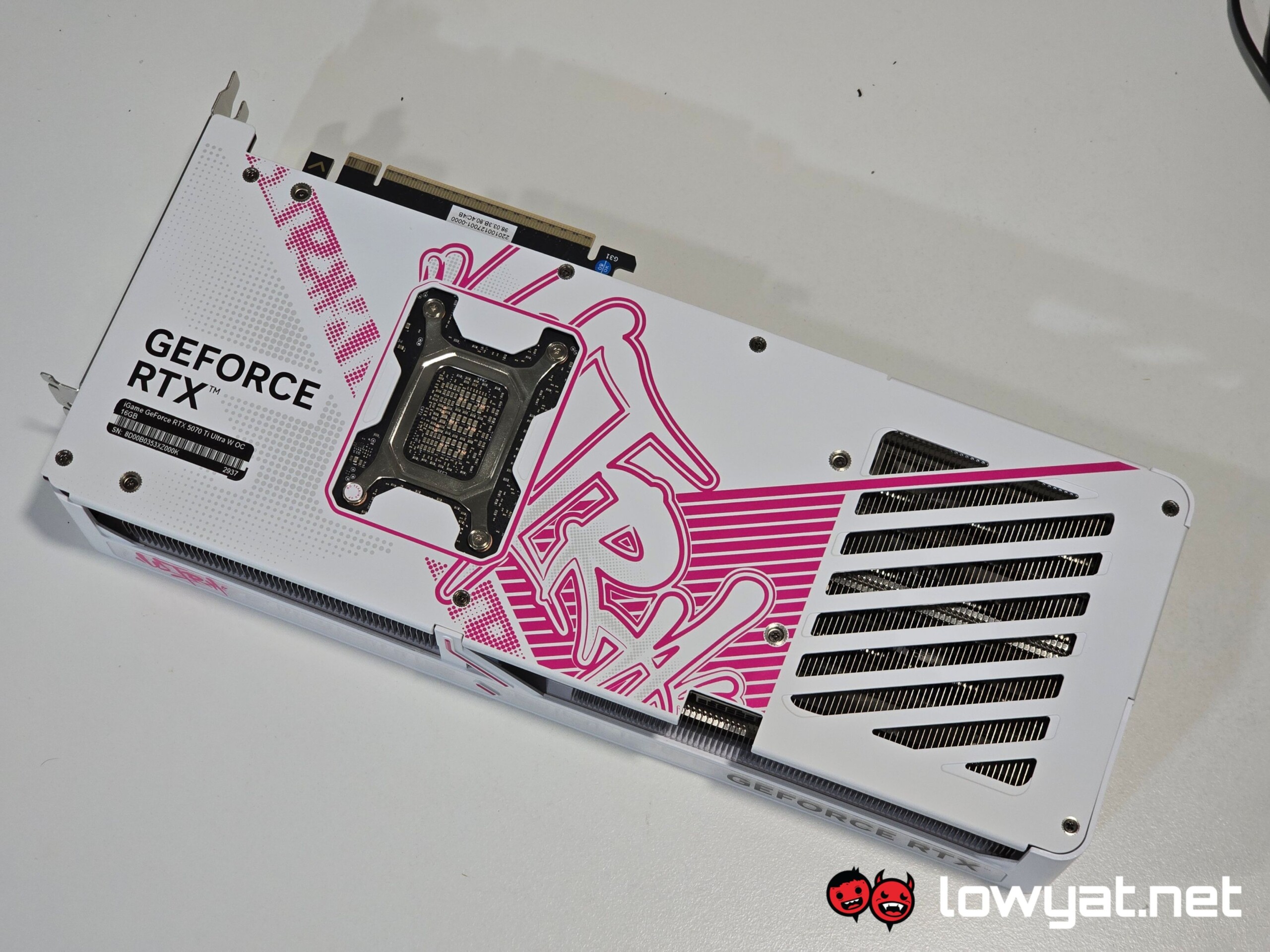

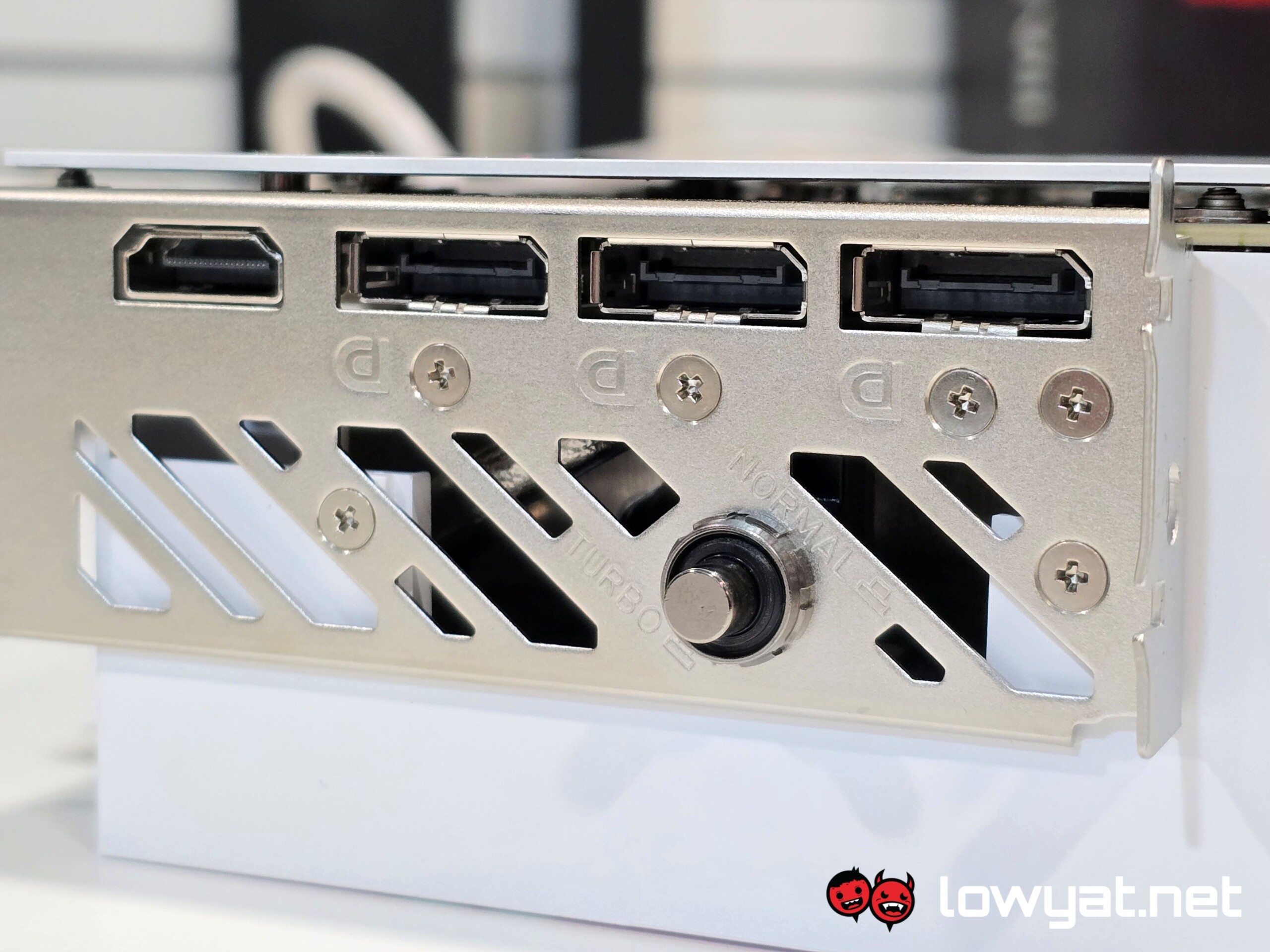

The iGame Ultra RTX 5070 Ti features a normal/Turbo button at the back. This is virtually the same as other cards that feature a “silent” and “performance” mode switch. However, these switches ultimately do not make much of a difference and typically provide single-digit gains only, both in average frame rates and synthetic benchmarks.
Sadly, one of the things the iGame Ultra RTX 5070 Ti isn’t is cheap or affordable. Off the shelf, this GPU will set you back RM4,199. That is, beyond a shadow of a doubt, steep and well above the SRP of RM3,400, more or less. But, to be fair, all the major GPU brands are selling their own custom-cooled SKUs north of RM4,000.
Testbench
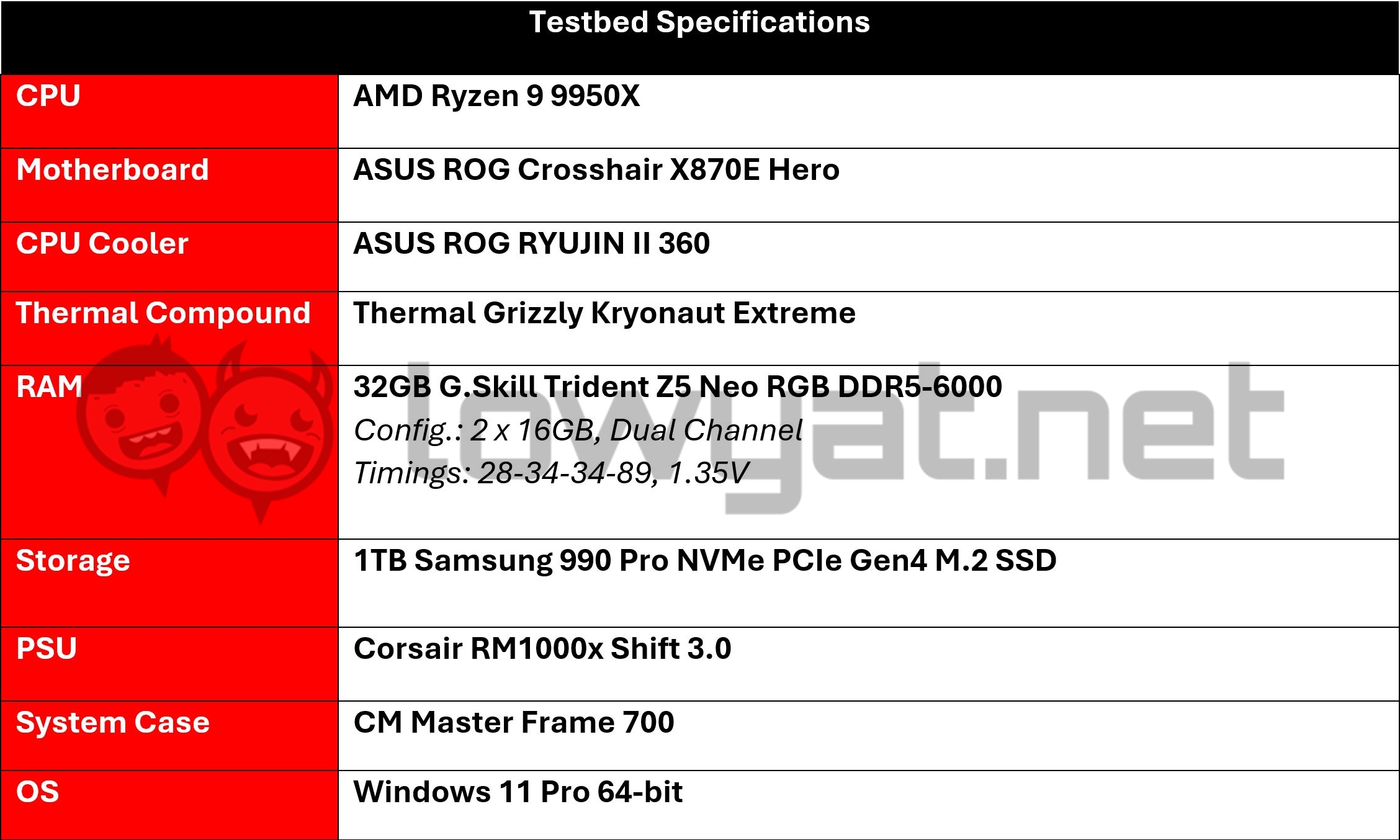

As a direct comparison, I am testing the iGame Ultra RTX 5070 Ti against the MSI Ventus 3X RTX 5070 Ti, simply because the latter is the first card of this segment that I tested. As such, the card will serve as the control card, or baseline if you will. Additionally, I’ve swapped out the Gigabyte X870E Aorus Elite Wi-Fi 7 motherboard for an ASUS ROG Crosshair X870E Hero.
At this point, I should also point out that I am using the GeForce WQHL 572.70 drivers, as they are the latest and most up to date drivers available.
Benchmarks, Temperatures, And Power Consumption
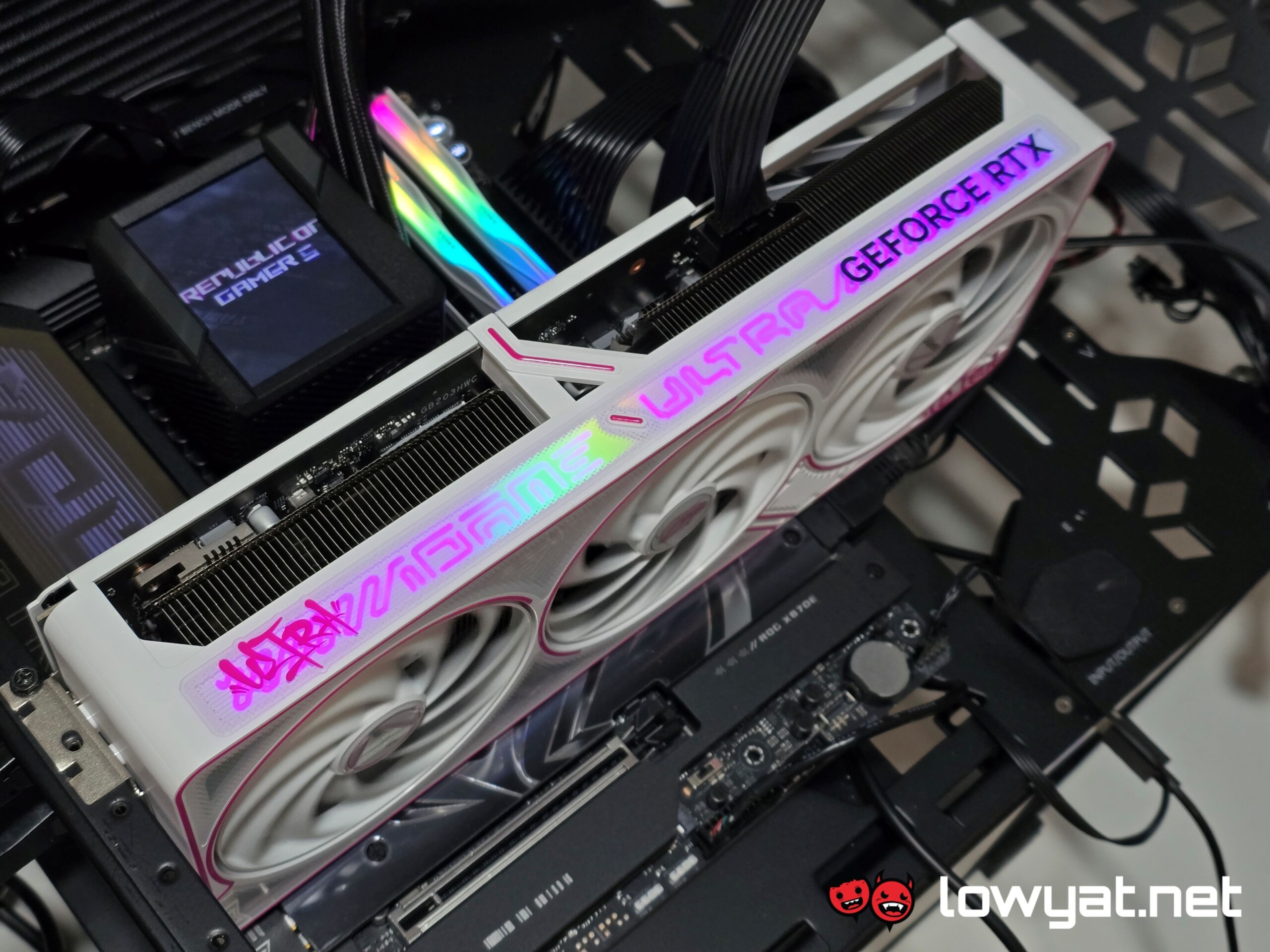

So, whether on normal or Turbo mode, the iGame Ultra RTX 5070 Ti performs more or less the same as the Ventus 3X, albeit just a little slower, if we’re being nitpicky. The synthetic benchmarks prove that point and show it basically matches our control card in each test.
The same is to be said in Unigine Superposition, where the card’s performance is only slightly slower than the Ventus 3X, again.
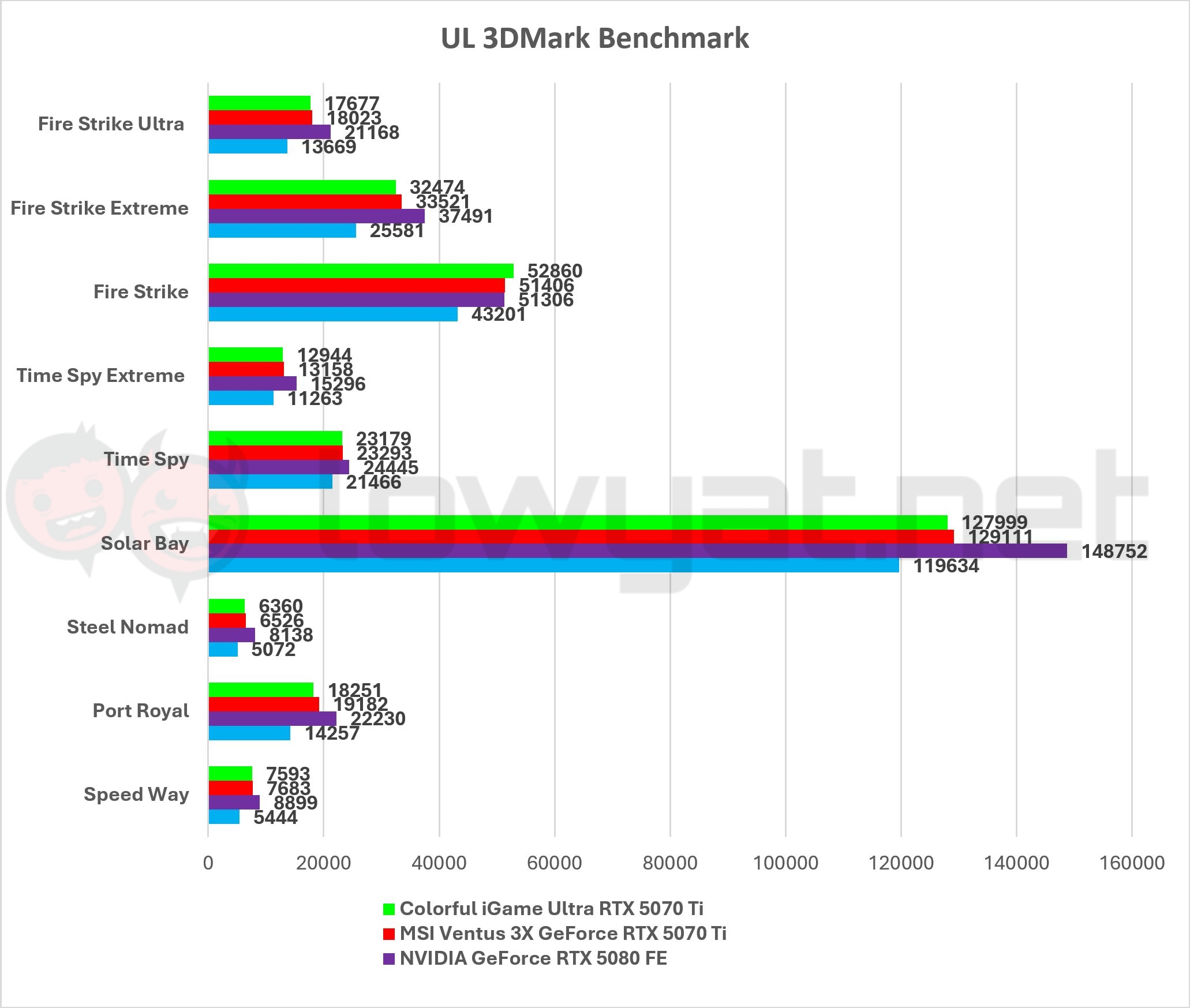

Perhaps one slight benefit that works in the favour of the iGame Ultra RTX 5070 Ti is that it runs a lot cooler than the Ventus 3X but again, that’ll be the massive chunk of metal sitting atop the GPU working overtime when gaming or running productivity tests. That, and the three fans that barely need to raise their decibels, even when working at full whack.
In the gaming segment of my testing, the iGame Ultra RTX 5070 Ti barely breaks a sweat in keeping the average frames above the 100 fps mark, and across all control titles. Honestly, the majority of my control titles run at those average frames, and without the aid of DLSS 4 or Multiframe Generation (MFG). That’s a win in my books.
Honestly, the only title that currently has performance optimisation issues is the new Monster Hunter Wilds. It gets quite irritating when you see your 1% lows take a dip into single-digit territory or somehow stay the course at the 30 fps average. There’s no reason a card like the iGame Ultra RTX 5070 Ti should even be holding such a pattern but again, it’s the game and not the card that’s at fault here.
Conclusion


At RM4,199, the Colorful iGame Ultra RTX 5070 Ti is yet another SKU on tap for the masses to consider. Unfortunately, like said masses, its asking price of RM4,199 is still a little steep, even if it is technically one of the cheaper options on the market.
Were the card just a little cheaper – below the RM4,000 marker, specifically – I wouldn’t mind purchasing the card. That said, do remember that given its size, this isn’t a card designed primarily for SFF PCs. So, if you decide to get this card, just remember to take the size and space of your casing into consideration as well.
Photography by John Law.
Follow us on Instagram, Facebook, Twitter or Telegram for more updates and breaking news.


